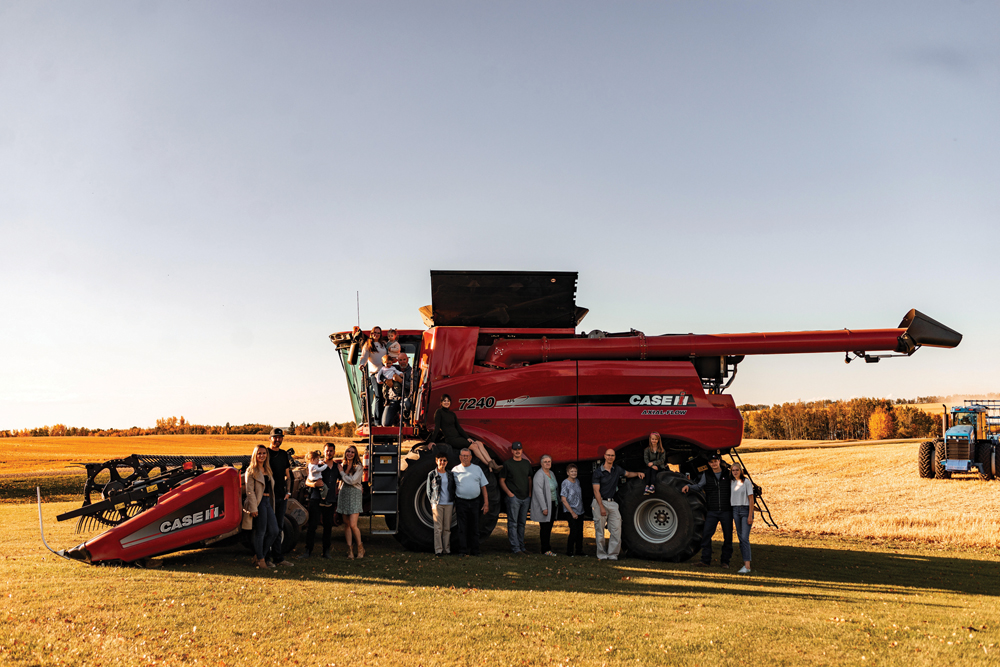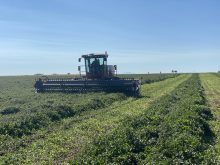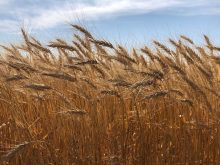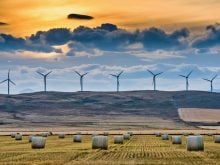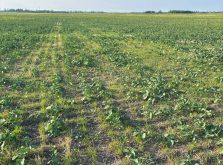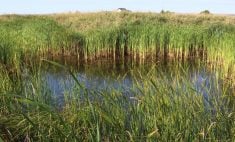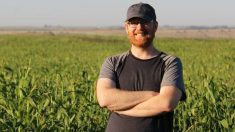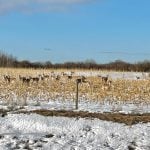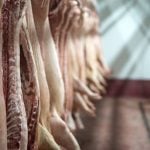The Prairie Farms feature is an ongoing series that highlights western Canadian producers and their farm operations. These producer and farm profiles will share the strategies, tips and experiences that have helped Prairie farmers be successful. Along with crop production strategies, this Q-and-A series will look at the personalities and lifestyles of farmers across Western Canada.
For this farm profile, Braden Hursh spoke with Alberta producer Emery Klein.
Q: Where do you farm?
I’m in Red Deer County, near Delburne, Alta.
Soil type?
Read Also
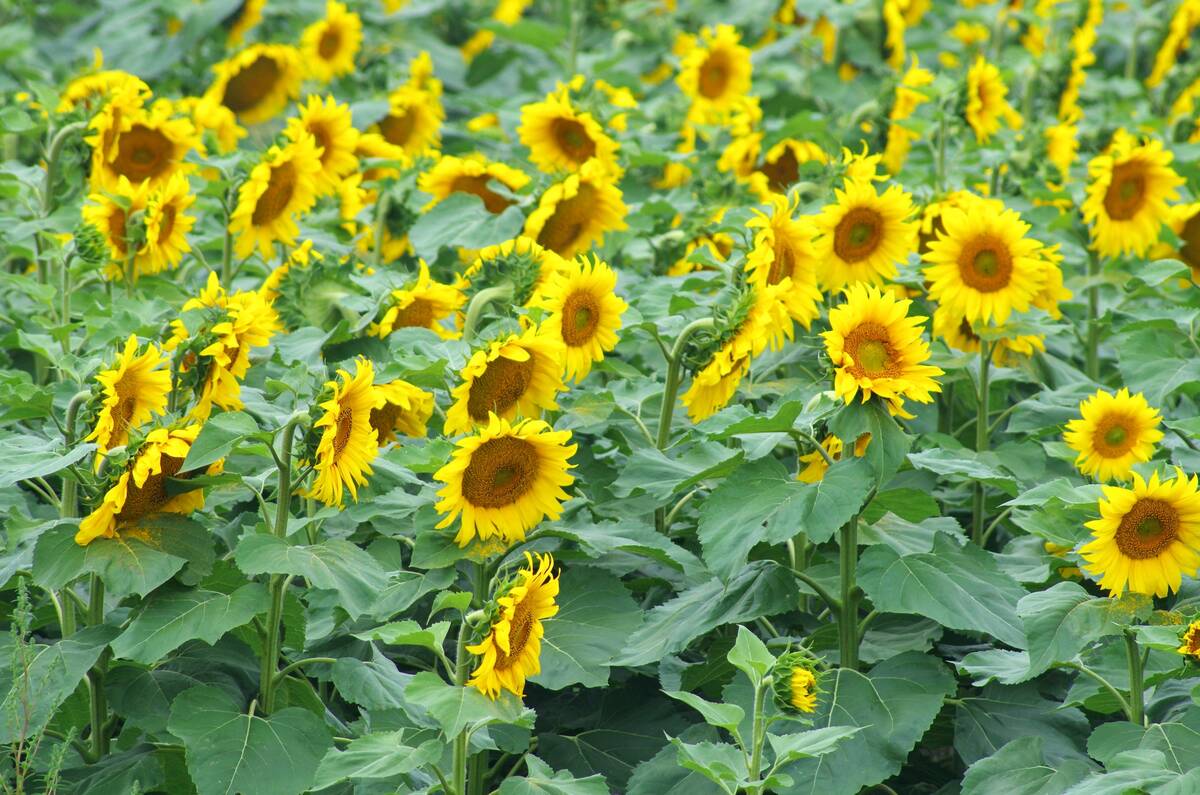
Made-in-Manitoba sunflower hybrid headed to market
Manitoba’s confection sunflower growers will have a new seed option next spring developed specifically for performance in the province. The…
Sandy loam.
How much land do you farm?
I farm just shy of 1,000 acres.
Who do you farm with? Family makeup?
I have one year-round full-time employee and my boys, Eythan is 25 and works on the pipeline and Evan is 19 and is working on his crane apprenticeship; they come back to help out when they can.
What was your career path?
I’ve been farming my whole life. My lifelong goal since high school was to become a farmer. When I was younger, though, the farm wasn’t big enough to support both my dad and I so I went to Olds College and got my agricultural mechanics diploma and then my agricultural mechanics journeyman, and then my heavy duty Red Seal journeyman. Now I’m a Red Seal millwright.
After high school I entered the ag field because I knew I could do it. I worked at some local dealerships that allowed me to take some time off during spring and fall to help back at the farm. After that I went into gas compression and that opened up even more time to help at the farm and I worked at a local sour gas plant until it shut down in 2019.
From there I took a position as an instructor at Red Deer College as a millwright instructor until COVID-19 sent everyone home. I was sitting in my home office, looking out at my farm and I thought to myself, “What are you doing?” It was then I decided to come home full-time and it was the best thing that ever happened to me.
I started working extremely hard. We have recently added a butcher shop and a large solar panel array. We’ve been going like hell and loving life.

What are your main crops?
I have wheat, barley and canola on a rotation. We go barley then to canola then to wheat on a three-year rotation.
Do you use any strategies to increase your crop success — micronutrients, variable rate fertilizer, field mapping et cetera? Do you have an agronomist you chat with regularly?
I have been doing variable-rate, sectional control since 2011 with full mapping. I’ve seen some success with it as the staging of the crop was more consistent and we didn’t have any lodging, which increased the ease of harvest. This year, with a huge spread between anhydrous and dry, I lost my variable rate and sectional control and went to a dry-blend fertilizer to save money. I also use the services of an agronomist.
What has been the best crop for you historically?
Every year it changes. It depends on so many factors, like weather and hail. You never know what you are going to get. Sometimes you catch a good spike in the marketing and it will make certain crops shine. It varies year to year based on all the factors that are completely out of our control.
What do you seed and harvest with?
My drill isn’t big, it’s a 30-foot New Holland/Flexi-Coil. It’s a two-part tank for dry and I haul the gas behind it. I just had a birthday, so for harvesting I gifted myself a 7240 Case combine with a 35-foot rigid header.
Are you strictly a grain farm or do you do other things as well?
Poultry: We do outside-finished chickens and turkeys through the central Alberta open-air farmers’ markets in the summertime. So we bring the chicks in as day-olds, then finish them outside. I take them to a government inspected abattoir for processing. Some of the packaging is done there and some of it is brought back to our government-inspected facility where we do some cutting, deboning, sausage-making, and packaging. We have whole chickens, half chickens, bird-in-a-bag, spatchcocks, thighs, drums, wings and six different flavours of hand-deboned, raw artisanal sausage.
With the turkeys we mainly do fresh, whole and half turkeys for seasons like Thanksgiving and Christmas.

Orchard: We also have a 20-acre orchard. My mother started our orchard back in the late ’90s when she put 14,000 blackcurrants in. I added 8,000 saskatoons and 800 rhubarb over the past few years. All the berries are combined using a modified blueberry combine. The berries and rhubarb are processed and frozen in commercial-style big boxes ranging from 20 pounds and up. When I took over the orchard I said I would not put anything in that we couldn’t mechanically harvest, but I broke that promise with putting in the rhubarb, which has actually worked out well for us.

Event space and photography: We have also opened up the farm to some local photographers that rent out the orchard and field areas as backdrops for their photo shoots.
What advice do you have for the next generation of farmers?
Think outside the box. There was no way when I came home to farm that I would end up being a large commercial grain farmer. We did not have the acres and competition in the area over acres was high. We were not established enough to take that risk. I did not set out to become a chicken farmer, it just naturally grew and I allowed it to. I kept track of my costs and profits and it naturally grew and became a worthwhile pursuit. We took what was available to us, improved it consistently and got better and better at it.
Also, don’t overextend yourself. Growing quickly and diversifying rapidly is a recipe to burn yourself out. Do your research, take your time, to make sure you will be successful.
What piece of equipment can you not live without?
I could get rid of all my equipment and still be happy. My mind is my best tool. Your body and your mind are the most important things. I get that guys love their tractor, or skid steer, or big, sexy combine, but if you don’t care about your mind or body it doesn’t matter how much expensive equipment you have lying around the yard.
What’s a good decision you made on the farm?
My decision to not go back and work at the college was the best decision I’ve made. I call it “retiring back to the farm.” It took me 30 years of blood, sweat and tears to figure it out but I’m absolutely enjoying it now.
What is a decision you wish you could take back?
Having casual conversations with neighbours and losing out on expansion opportunities. I’ve turned down land rentals and it bit me in the ass. You need to take opportunities when they are offered or you’ll miss out.
On your website you talk about being a steward of the land and also sustainable farming practices. Can you explain what that means to you?
I’m a generational farmer. If I don’t take care of it, how will I pass it on to the next generation? Who is more in tune with Mother Nature than farmers? We live, succeed and fail by Mother Nature. As farmers, we forget how in tune with nature we are, whether that be weather or crop rotations or agronomy.
What changes do you see in your area in the next five to 10 years?
We can’t predict the future. The world is moving faster and faster every year and I don’t know where it’s going at this point. I don’t try to predict the future, I try to react and pivot based on what I know. Every time you try to out-predict the markets or someone else, it goes the other way. Gather the information available to you, work with what you have that day, and make the best decision you can at that time.

What do you do for fun?
Farming is fun for me.
With turning 50 this year, though, I’ve challenged myself to do a few things. I decided to expand and improve my health. I committed to 50 days sober and 50 days on the ski hill. I gave up the craft beer that I love for 50 days, dropped a bit of weight and now I go to spin class in my local town twice a week. We go at six in the morning for spin to build the endurance and leg strength for when I hit the slopes this winter. I average around 25 days in the mountains every winter, this year I’m planning for 50 days.
You can find out more about Emery Klein’s operation on the Klein Farms website.

